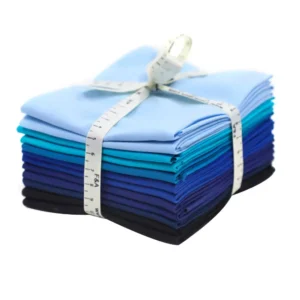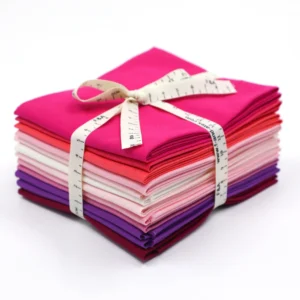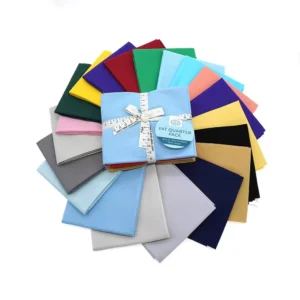In the world of quilting and sewing, the term “fat quarter” is a staple that many enthusiasts are familiar with. Despite its curious name, a fat quarter is not a measurement of body weight or a reference to food, but rather a specific cut of fabric that is both versatile and economical for various crafting projects.
What is a Fat Quarter?
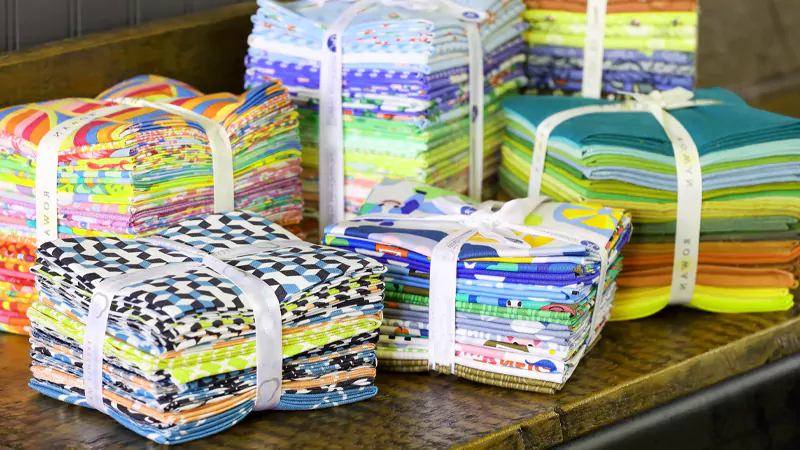
A fat quarter is a quarter-yard cut of fabric, but unlike a traditional quarter-yard cut that measures 9 inches by the full width of the fabric (typically 44 inches), a fat quarter is cut differently to maximize usable fabric. By cutting a half-yard of fabric and then slicing it in half again, you end up with a piece that is approximately 18 inches by 22 inches. This unique shape makes fat quarters ideal for quilting, allowing for more versatile cutting and piecing.
How Big is a Fat Quarter?
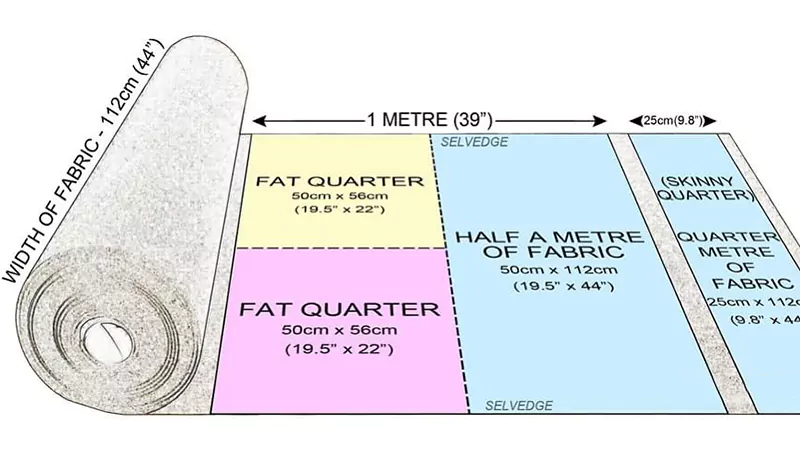
To understand the size of a fat quarter, it’s important to start with the dimensions of the standard fabric bolt. Most quilting fabrics are 44 inches wide when unfolded from the bolt. A traditional quarter-yard cut from this width measures 9 inches by 44 inches, providing a long, narrow strip of fabric.
In contrast, a fat quarter measures approximately 18 inches by 22 inches. This is achieved by first cutting a half-yard (18 inches) and then cutting this piece in half along its width (22 inches). The resulting piece retains the total surface area of a quarter yard (0.25 square yards) but offers a squarer, more usable shape for quilting and crafting projects.
What Size is a Fat Quarter?
The size of a fat quarter can be summarized as follows:
Length: Approximately 18 inches
Width: Approximately 22 inches
These dimensions provide several advantages for quilters and crafters:
Versatility: The 18×22 inch size allows for larger squares and shapes to be cut from the fabric, compared to the long, narrow strip of a traditional quarter-yard.
Convenience: Fat quarters are easier to handle and store, often being sold in pre-cut bundles that showcase coordinated fabric designs.
Economy: For small projects or when a variety of fabrics are needed, fat quarters are a cost-effective solution, reducing the need to purchase larger yardages.
How Many Yards in a Fat Quarter?
Understanding the yardage equivalent of a fat quarter can be helpful when planning larger projects or when calculating fabric requirements. One fat quarter is a quarter of a yard by definition. However, the unique cutting method means the dimensions differ from a traditional quarter-yard cut.
To break it down:
- 1 Yard of Fabric: Measures 36 inches by 44 inches
- Half Yard: Measures 18 inches by 44 inches
- Quarter Yard (Traditional): Measures 9 inches by 44 inches
- Fat Quarter: Measures 18 inches by 22 inches
Despite the different dimensions, both a traditional quarter-yard and a fat quarter contain the same surface area:
Traditional Quarter Yard: 9 inches × 44 inches=396 square inches
Fat Quarter: 18 inches × 22 inches = 396 square inches
Therefore, four fat quarters are equivalent to one yard of fabric. This equivalence is crucial for quilters who need to convert between fat quarters and traditional yardage when planning their projects.
Why Use Fat Quarters?

The popularity of fat quarters can be attributed to several factors:
- Ease of Use: The 18×22 inch size is more manageable for cutting and piecing than longer strips.
- Fabric Variety: Fat quarters allow quilters to incorporate a greater variety of fabrics into their projects without committing to large quantities of each fabric.
- Pre-Cut Convenience: Many fabric stores offer pre-cut fat quarter bundles, often color-coordinated or themed, which simplifies the selection process for quilters.
Practical Applications of Fat Quarters
Fat quarters are particularly beloved in the quilting community for their practicality and versatility. Here are some common uses:
- Quilt Blocks: The size of fat quarters makes them ideal for cutting various quilt block shapes, from squares and triangles to more complex patterns.
- Appliqué: The manageable size and variety of fabric designs available in fat quarters are perfect for appliqué projects.
- Small Projects: Fat quarters are suitable for making small items like pot holders, fabric baskets, and cosmetic bags.
- Scrap Quilts: Using fat quarters can create a beautiful scrappy quilt with a diverse mix of patterns and colors.
- Sampler Quilts: For those making sampler quilts with different blocks, fat quarters provide the necessary variety without excessive leftover fabric.
Buying and Storing Fat Quarters
When purchasing fat quarters, quilters often look for bundles that offer a cohesive collection of fabrics. Fabric designers and manufacturers curate these bundles to ensure that the fabrics coordinate well together, simplifying the process of fabric selection.
Storing fat quarters can be straightforward:
- Folding: Neatly folded fat quarters can be stacked or stored in bins or drawers, making it easy to see and access each fabric.
- Organizing by Color or Theme: Grouping fat quarters by color or theme helps quilters quickly find the fabrics they need for specific projects.
Conclusion
The fat quarter is a versatile, practical, and economical cut of fabric that has become a cornerstone of the quilting world. Its unique dimensions, equivalent to a quarter yard but offering a more useful shape, make it ideal for a wide range of quilting and crafting projects.
Whether you are a beginner just starting your quilting journey or an experienced quilter looking to expand your fabric stash, understanding the benefits and uses of fat quarters will undoubtedly enhance your creative endeavors.
Embrace the convenience and variety that fat quarters offer, and let your quilting projects flourish with color and creativity.
